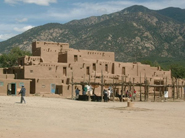Solving the next energy crisis, a million houses at a time
 Did you know that U.S. energy security is as easy as weatherstripping your house?
Did you know that U.S. energy security is as easy as weatherstripping your house?It’s time to update how we think about national energy issues. And better architecture is the key.
I learned so this week at the BEST3 conference, a tidy affair that draws a few hundred architects interested in better building walls and roofs. Held in Atlanta, the conference also brought attendees — including yours truly — to the fabulous High Museum for roast pork, beers and a peek at Picasso.
Sitting in Richard Meier’s serene lecture hall, we heard remarkable insights from keynoter R. Christopher Mathis, an Asheville, North Carolina-based consultant on building performance.
Architects make power plants disappear
With the zeal and conviction of a revival camp preacher, Mathis proves a few audacious claims, including this one: “A 30% improvement in U.S. building efficiency would reduce energy bills by $75 billion in 15 years and eliminate the need for 80 new nuclear power plants over the next 20 years.”
Eighty power plants? Yes. “And 30% is easy,” he adds.
Our appetite for electricity is huge, and it’s not getting any smaller. About 68% of the generating capacity is coal and natural gas, and Mathis describes the 7,000-feet-long trains, filled with nothing but Wyoming coal, that take three days to arrive at a power plant in the Southeast. The mile-and-a-half of coal cars are all tipped and unloaded in about an hour, and all the coal is burned — in just eight hours.
Nationally, about half of all our electricity is gobbled up by buildings and houses. That’s twice as much as industry, and almost twice as much as the transportation sector.
New windows = 300 coal power plants!
Mathis has a few solutions up his sleeve, and the implications are astounding.
It’s pure math. For example, we’ve got about 120 million homes with about a billion old windows, most of which are old single-pane and double-pane versions that don’t even meet today’s minimum codes.
“And window solar gain is the single largest contributor to home cooling loads,” says Mathis. In 1973, less than half of our new homes had air-conditioning; today an astounding 91% of new dwellings have AC. Mainly thanks to the “crappy windows” we use.
The solution?
Replacing windows only in existing homes — not with the best windows, but the minimum code-compliant products — would cut AC by at least a ton, saving a total of at least 60 million kilowatts. That’s the equivalent of about 300 coal-fired power plants. The ones that use a mile-and-a-half long train delivery of dirty coal, three times a day.
Mathis has many more ideas like this, all of which save energy for as long as our houses stand — “about a hundred years” is his mantra — while creating jobs and goosing the economy. He emphasizes that existing houses and buildings should be the biggest focus. “They are 99% of our problem,” he says. “The big gorilla in the corner.”
Millions of little power plants?
In Mathis’s home state of North Carolina, a utility proposed a new, $17 billion nuclear power plant. Mathis showed up at the public hearings and showed how $5,000 worth of energy-efficiency upgrades to each of the state’s 4 million homes would save twice as much power as the new nukes would generate.
“Our existing homes and commercial buildings are essentially millions of little ‘power plants’ we have already built but we haven’t turned on,” Mathis quips.
But the nukes plant would employ about 500 people, argue its backers. Mathis says, so what? North Carolina would create hundreds of thousands of jobs installing insulation, air sealing, replacing windows, sealing leaky ducts, and the like.
Energy angels in Atlanta
Mathis is an important national resource, an North Carolinians are lucky to have him.
Here’s a quick shout-out to some of the other backers and organizers of BEST3: The event is organized by NIBS and the Building Enclosure Councils, an offshoot of the AIA, but it’s really the result individual champions like Wagdy Anis, FAIA, and David Altenhofen, AIA, as well as the folks who organized the BEST 3 program.
The sponsors this year for the biennial meeting included a gaggle of companies that would benefit handsomely if Mathis’s vision of a more energy-efficient future were to come to fruition. Among the backers were Sto Corp. (a client of mine) as well as Soprema, Inc., Georgia-Pacific Gypsum, VaproShield Inc., DuPont / TYVEK and Atlas Roofing Corporation, among others.
Think about it: Would you rather have nice new windows with keep your house comfy, or a nice new power plant you can look at out of your crappy old windows?
You can return to the main Market News page, or press the Back button on your browser.

